
We took the road which, more or less, follows the Richelieu River downstream towards the town of St Denis. More on that later. But first, a most important stop!

The Clos Saint-Denis Winery produces Ice Apple Wine, a wine made from apples, using techniques akin to those for producing ice wine. The web page lists the many products they produce; it is both a vinyard and an orchard!

Our guide for the tour of the property. The vinyard part is behind him; the orchard was off to the right, but I don't think I photographed it at all. Well, see one apple orchard, you've seen 'em all.

The group listening intently. The green building on the left is the bottling plant, as well as office and tasting area.

There is a rose bush at the end of each row of grape vines. These are more sensitive to soil conditions than are the vines, and so will show signs of distress before the grapes, thus allowing a faster response. Of course, they also look nice!
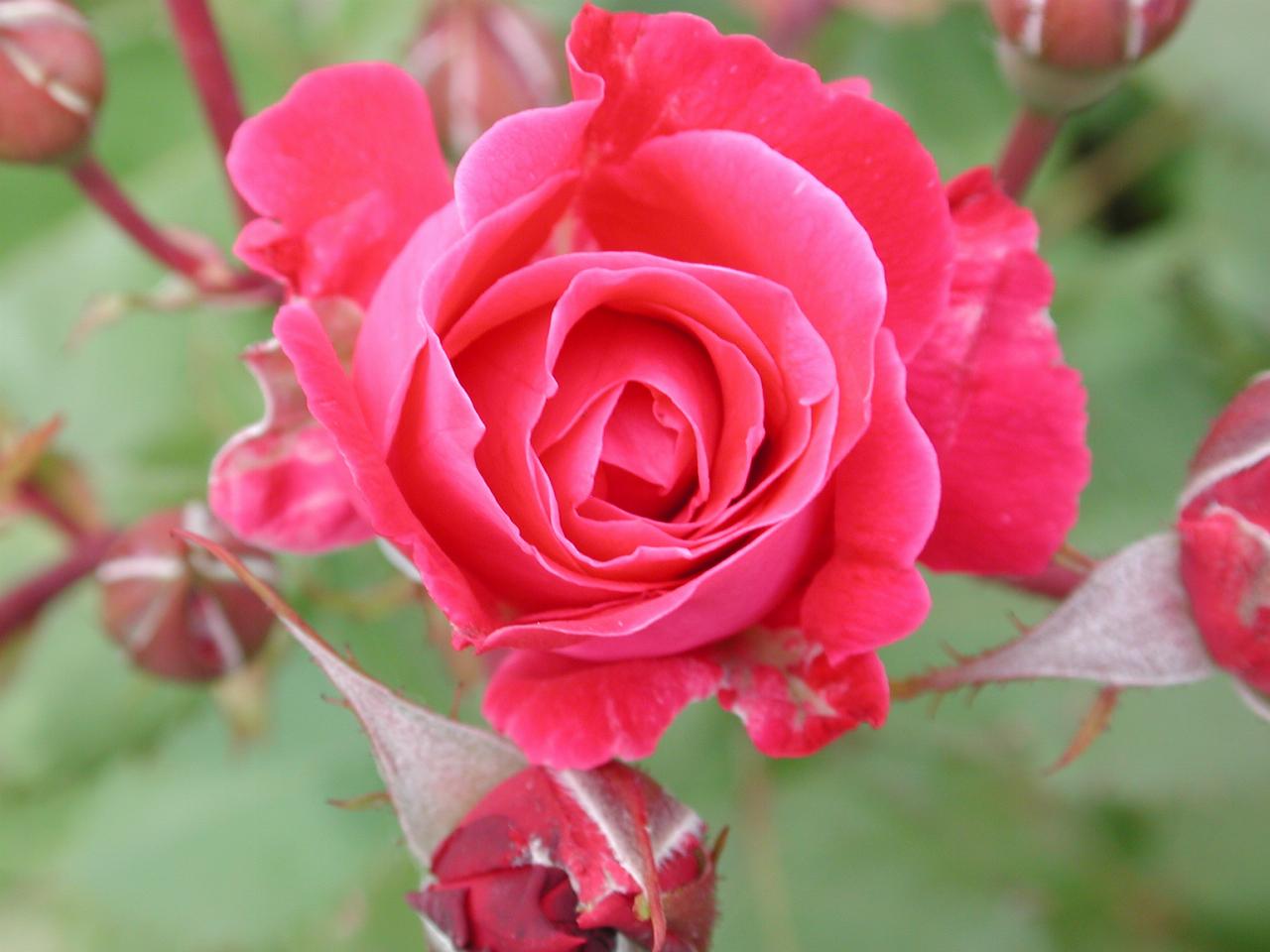

Some of the rose flowers at the vinyard. And they also had quite a nice perfume.
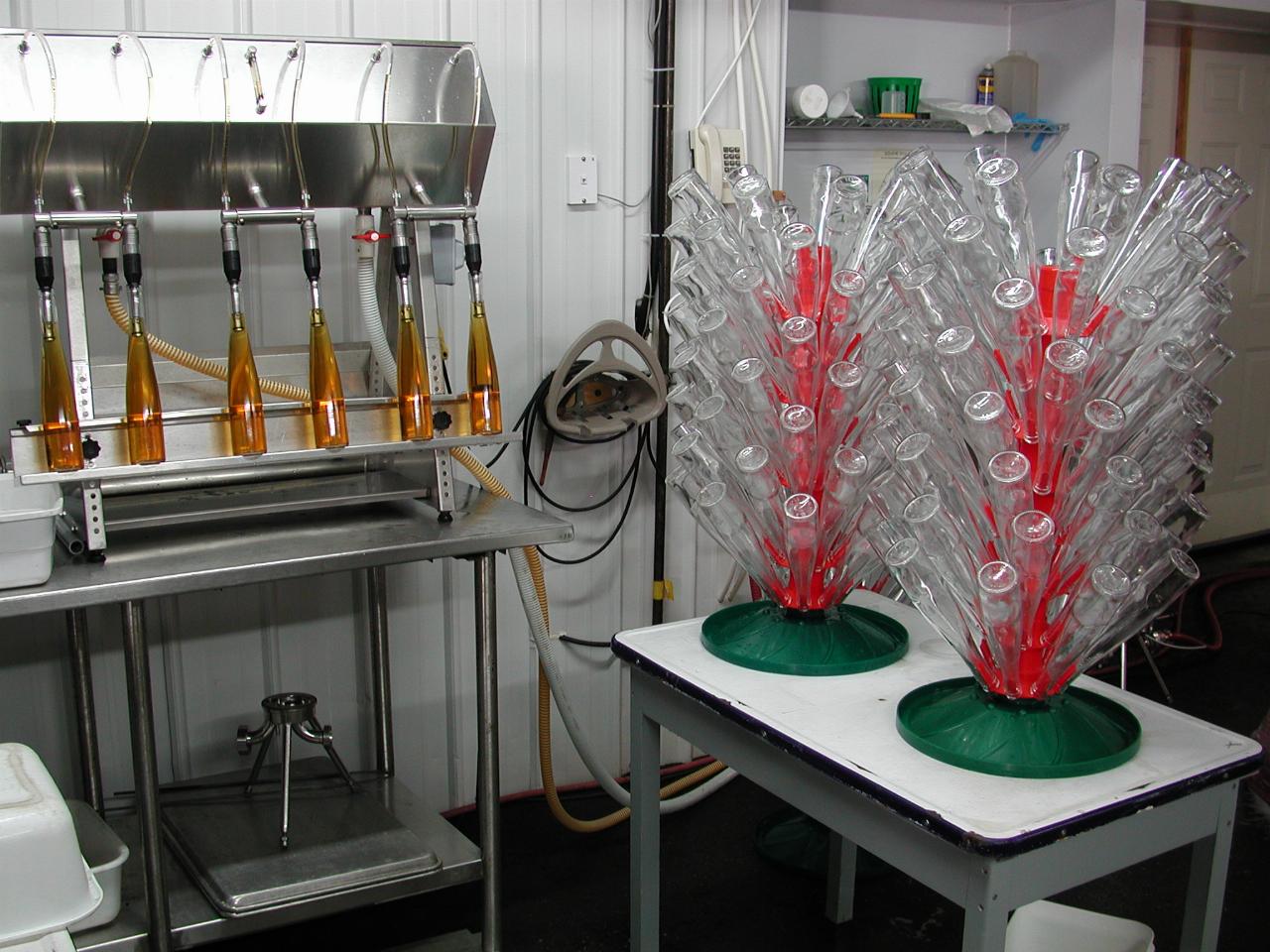
The bottling facility. The red pillars on the right are drying racks for the bottles, which are washed before being filled. After washing, they are placed on the rack to allow the water to drain out.

After this "tour" of the bottling facility we entered the tasting room and tasted some of their products. While quite nice, I might have considered buying some had it not been for the continuation onto Italy.
A sample label from the first bottle of ice apple wine was on the wall in the tasting room. Note the alcohol content - 11.5%!
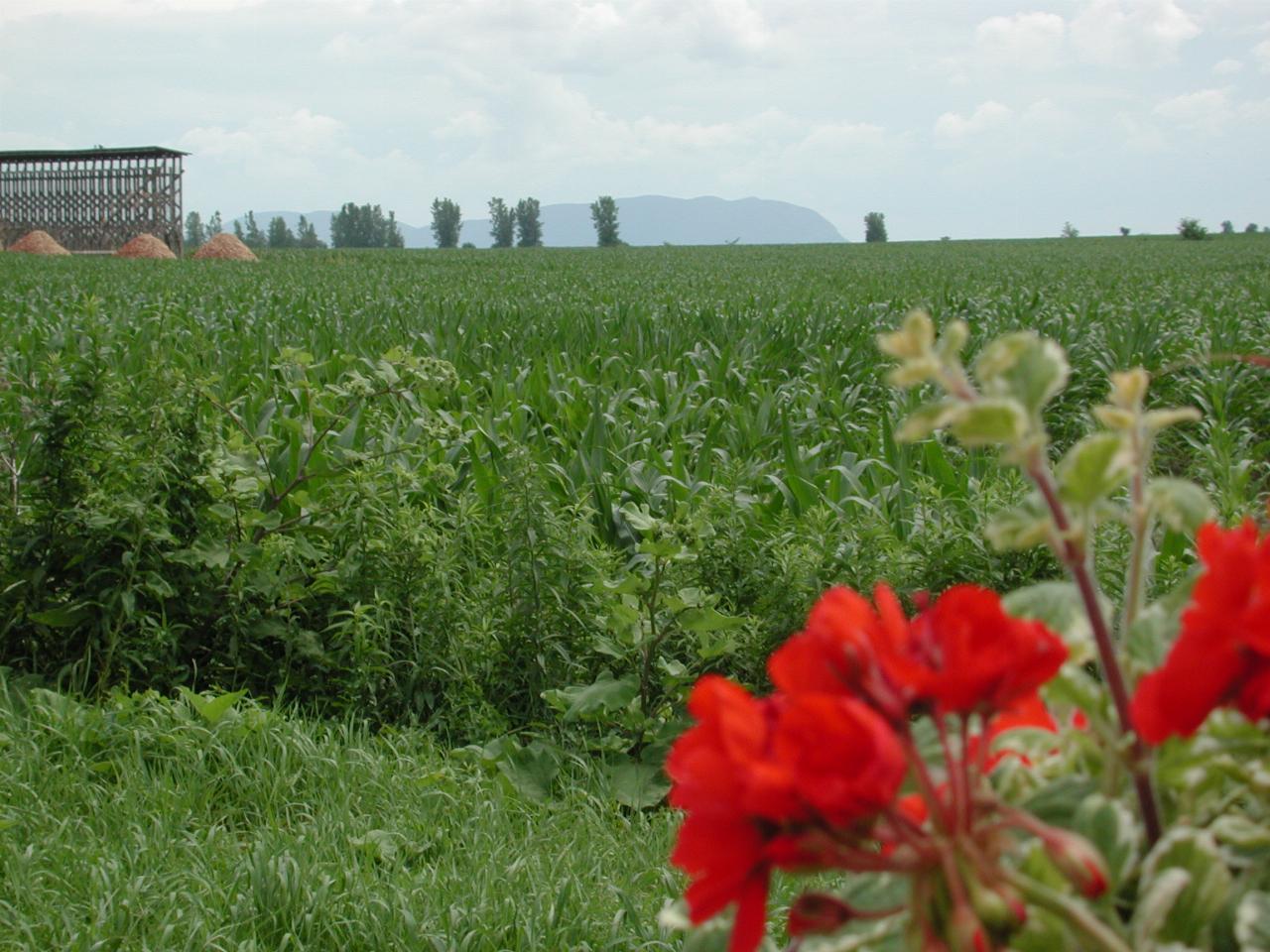
Looking over the corn field next to the winery. Also shows one of the distinctive mountains that dot this part of the world. Lise did say something about them, but I don't remember it.

We came here for lunch. On the terrace. Overlooking the Richelieu River. This is (as the sign shows) a Bed and Breakfast type of establishment, with the upper level being accomodation, and the lower level a restaurant.
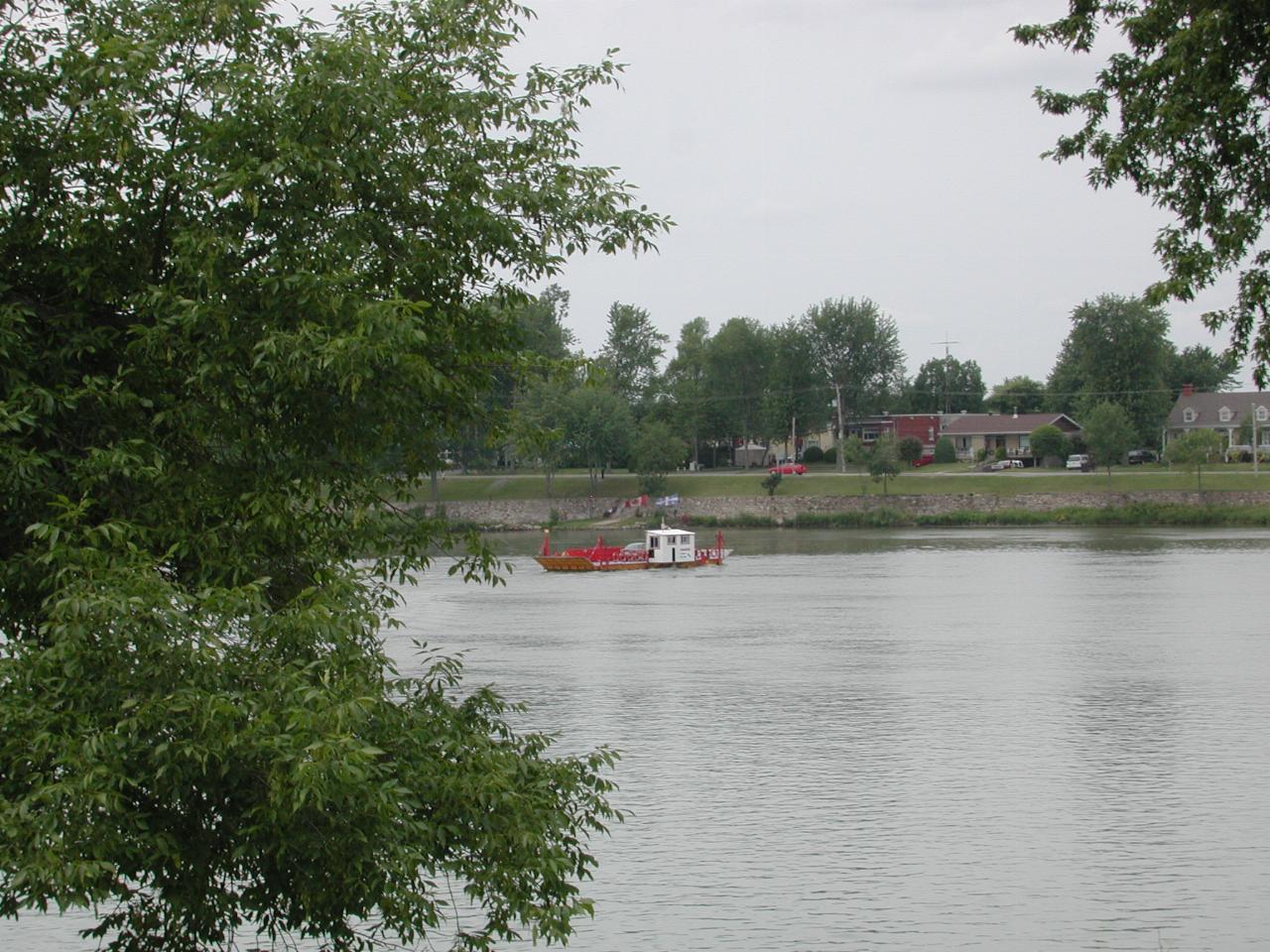
The car ferry as seen from our dining area.

The deck where we ate is visible on the right hand side of the restaurant, with the blue and yellow umbrellas. It seemed that everybody knew when I came out to take some photos, as the road became very busy for a while!
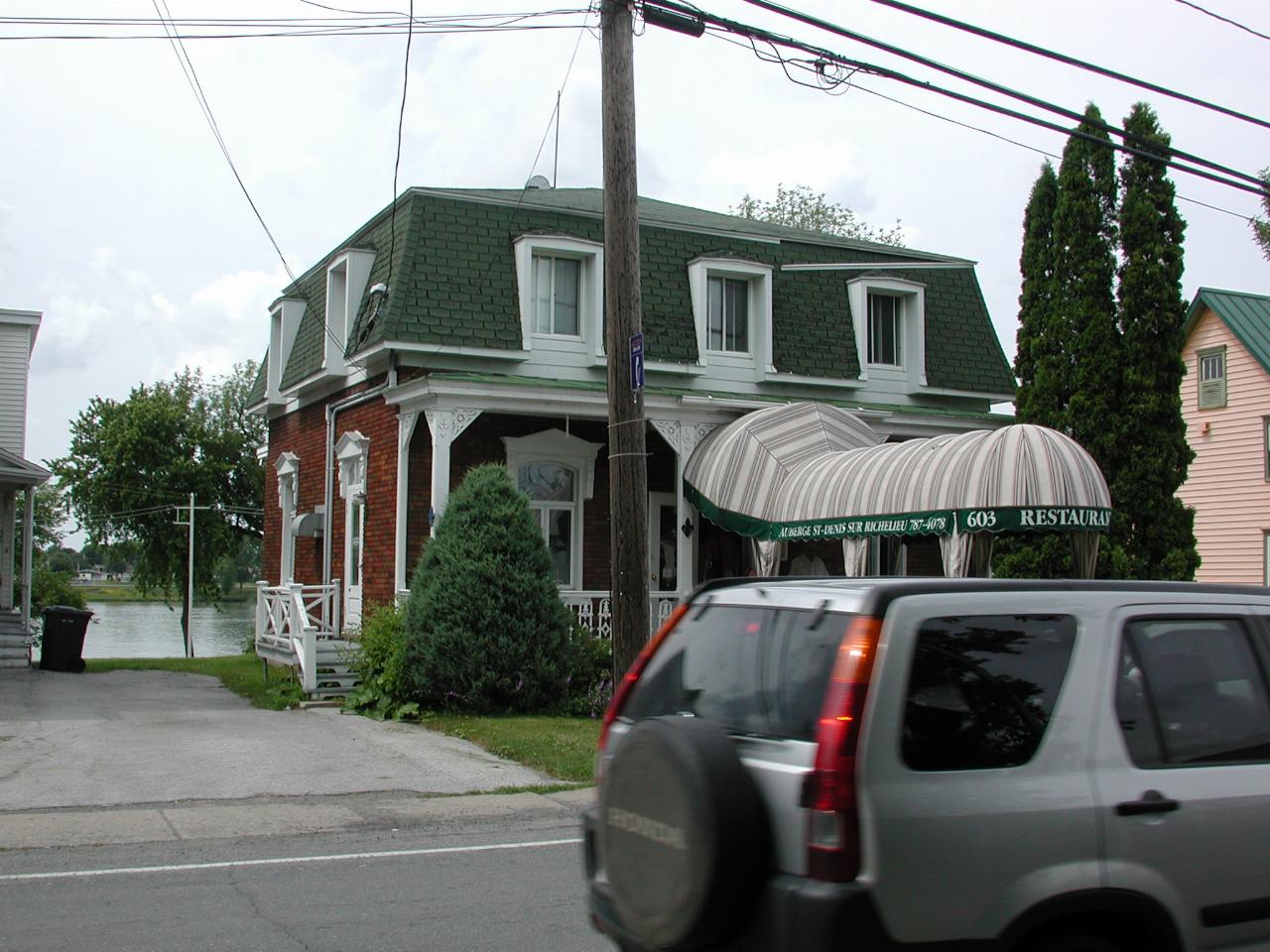
The view of the other side, showing the river just behing the Auberge. And more traffic!
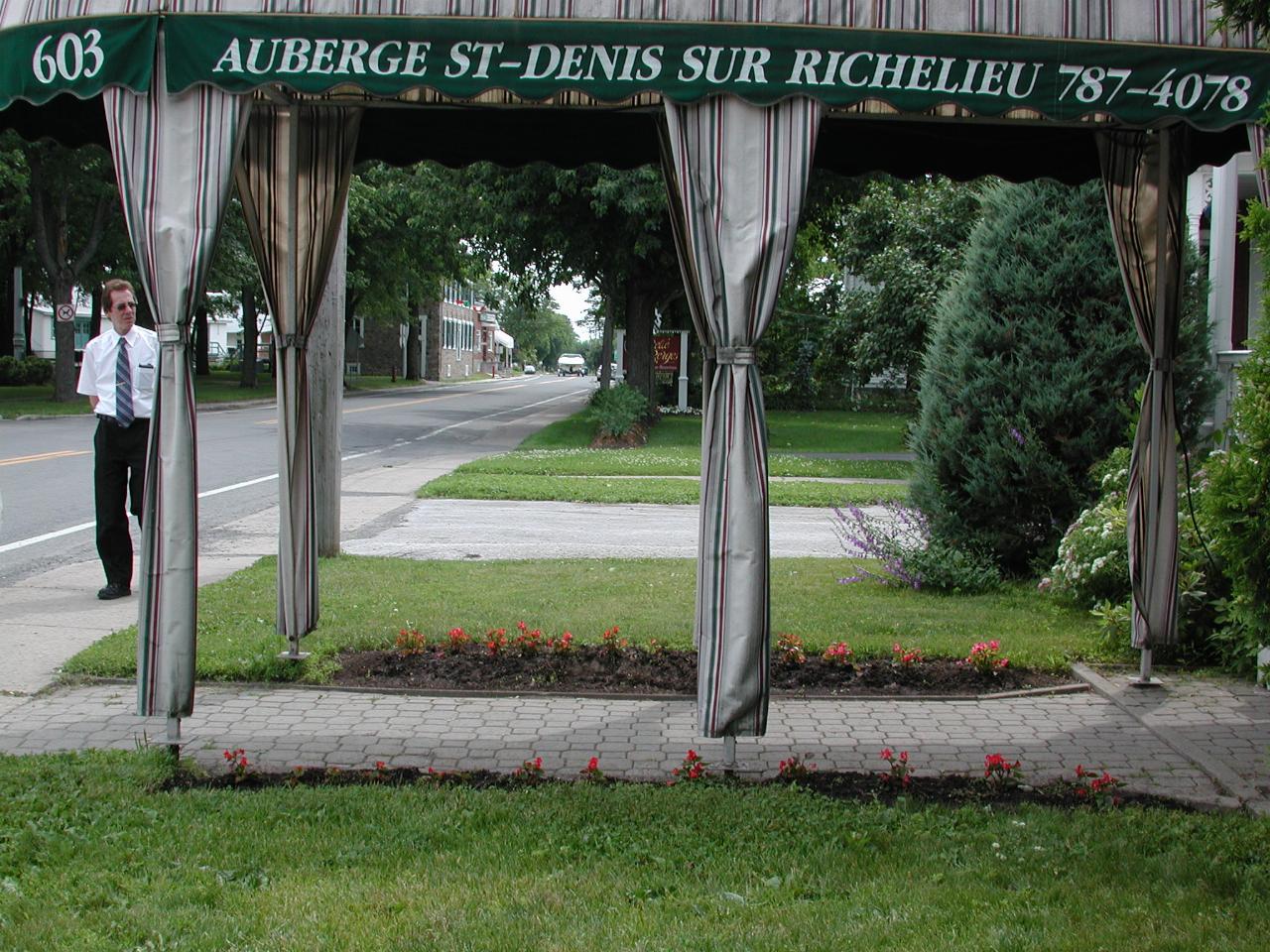
See - no cars now that I have the photos from across the street! Just Gaston, our driver.